(1) This will be a short Scroll because I am heading north today to attend the birthday celebration of one of my nephews. I’m looking forward to it.
(2) THE FUTURE OR ALREADY STALEDATED? The New York Times answers its own rhetorical question in “A.I. Can Make Art That Feels Human. Whose Fault Is That?”.
This was the year — ask your stockbroker, or the disgraced management of Sports Illustrated — that artificial intelligence went from a dreamy projection to an ambient menace and perpetual sales pitch. Does it feel like the future to you, or has A.I. already taken on the staleness and scamminess of the now-worthless nonfungible token?
Artists have been deploying A.I. technologies for a while, after all: Ed Atkins, Martine Syms, Ian Cheng and Agnieszka Kurant have made use of neural networks and large language models for years, and orchestras were playing A.I.-produced Bach variations back in the 1990s. I suppose there was something nifty the first time I tried ChatGPT — a slightly more sophisticated grandchild of Eliza, the ’60s therapist chatbot — though I’ve barely used it since then; the hallucinatory falsehoods of ChatGPT make it worthless for journalists, and even its tone seems an insult to my humanity. (I asked: “Who was the better painter, Manet or Degas?” Response: “It is not appropriate to compare artists in terms of ‘better’ or ‘worse,’ as art is a highly subjective field.”)
Still, the explosive growth of text-to-image generators such as Midjourney, Stable Diffusion and Dall-E (the last is named after the corniest artist of the 20th century; that should have been a clue) provoked anxieties that A.I. was coming for culture — that certain capabilities once understood as uniquely human now faced computational rivals. Is this really the case?
Without specific prompting, these A.I. images default to some common aesthetic characteristics: highly symmetrical composition, extreme depth of field, and sparkly and radiant edges that pop on a backlit smartphone screen. Figures have the waxed-fruit skin and deeply set eyes of video game characters; they also often have more than 10 fingers, though let’s hold out for a software update. There is little I’d call human here, and any one of these A.I. pictures, on its own, is an aesthetic irrelevance. But collectively they do signal a hazard we are already facing: the devaluation and trivialization of culture into just one more flavor of data.
A.I. cannot innovate. All it can produce are prompt-driven approximations and reconstitutions of preexisting materials. If you believe that culture is an imaginative human endeavor, then there should be nothing to fear, except that — what do you know? — a lot of humans have not been imagining anything more substantial. When a TikTok user in April posted an A.I.-generated song in the style (and voices) of Drake and the Weeknd, critics and copyright lawyers bayed that nothing less than our species’s self-definition was under threat, and a simpler sort of listener was left to wonder: Was this a “real” song? (A soulless engine that strings together a bunch of random formulas can pass as Drake — hard to believe, I know….)
(3) RICK AND MORTY. Animation World Network is there when “Adult Swim Drops First Sneak Peek of ‘Rick and Morty: The Anime’”.
Adult Swim recently took to YouTube to reveal a sneak peek for Rick and Morty: The Anime, the upcoming 10-episode 2D animated series following Rick as he encounters multiple versions of himself from parallel universes.
Based on the Emmy-award-winning adult animated series, the anime adventure will debut on Adult Swim and Max. Director Takashi Sano (Tower of God) previously directed two anime shorts, Rick and Morty vs. Genocider and Summer Meets God (Rick Meets Evil), which received widespread fan and critical acclaim upon release. The Anime was greenlit last May….
(4) BOOK QUESTIONS. An excerpt from “By the Book – Interview: David Mamet” in the New York Times.
What book would you most like to see turned into a movie that hasn’t already been adapted?
The only book not adapted to the screen is the phone book. I tried, but only got as far as the title: “Funny Names, No Plot.”
What’s the last book you read that made you laugh?
“The Berenstain Bears Get Cancer.”
The last book that made you cry?
“Bambi.”
The last book that made you furious?
“The Wealth of Nations.”
Has a book ever brought you closer to another person, or come between you?
My wife once threw a book at me.
(5) TIPS FOR TEAMING UP. “Sharing the Spotlight: 6 Tips for Collaborative Storytelling” by Hildy Silverman at the SFWA Blog.
Sharing story creation and developmental duties with a writing partner might seem daunting, given that we authors tend to invest a certain amount of ego (to put it mildly) into our work. Writing alone, we can be possessive of our characters and staunch in our plans for their adventures. Yet co-authors must be willing to let some “darlings” die in order to successfully create a truly collaborative work—otherwise, hurt feelings and anger could ruin a promising authorial partnership.
In a previous post on this blog, Gareth L. Powell addressed the nuts and bolts of working with a co-author. Rather than rehashing his excellent advice, I am going to focus on the challenges of collaborating, and provide suggestions on how to proactively avoid bruised egos and hurt feelings.
Tip #1: Try before you buy (in)
Whether the other author is a longtime friend or merely a professional colleague, make sure you know what you are getting into before committing to a collaborative project. Read two or more stories they have written previously to discover whether they have a compatible style with yours and the fundamental skills to write at a professional level. You don’t necessarily have to love everything about their style, but you should not be so turned off that you cannot imagine finding common ground to create something new. You definitely should not find their work a chore to read as you mentally correct their every mistake…
(6) TODAY’S BIRTHDAY.
[Written by Cat Eldridge.]
Born December 29, 1963 — Dave McKean, 58. So let’s talk about Dave McKean and let me state right upfront that I consider his most brilliant work to be his work with Gaiman on The Tragical Comedy or Comical Tragedy of Mr Punch: A Romance. An absolutely stellar work — violent, horrifying, thrilling. But then Mr. Punch always scared me…
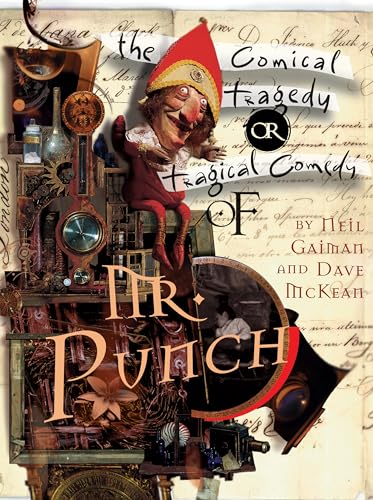
Now let’s go back to the beginning of his career. Violent Cases with Gaiman was his first work back thirty-six years ago. It was drawn in shades of blue, brown, and grey, but when it was first published by Escape Books, it was printed in black-and-white. Later editions have been printed in colour.
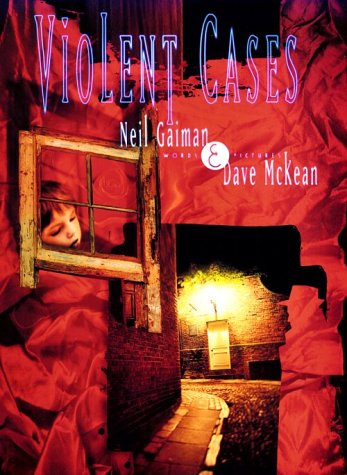
Several years later, Grant Morrison wrote and he illustrated Arkham Asylum: A Serious House on Serious Earth (often called Batman: Arkham Asylum). It’s an absolutely brilliant look at Arkham Asylum, something neglected really in the comics. It’s considered one of Morrison’s best works.
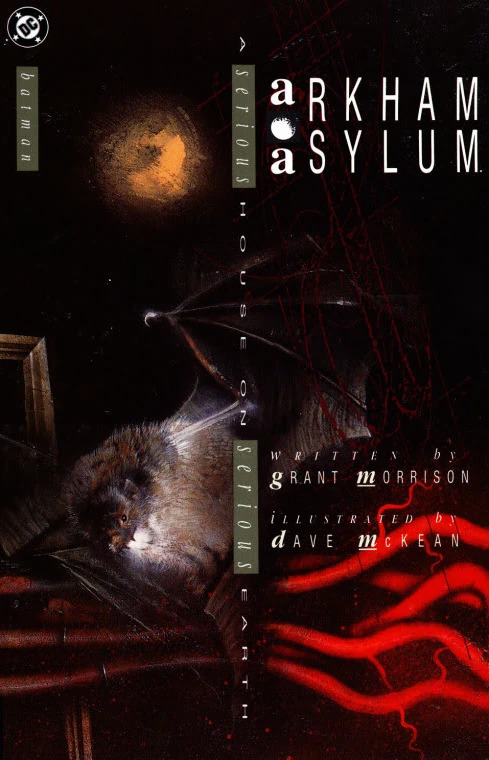
Remember Dustcovers: The Collected Sandman Covers? It was really fun to leaf through that work and look at the covers.
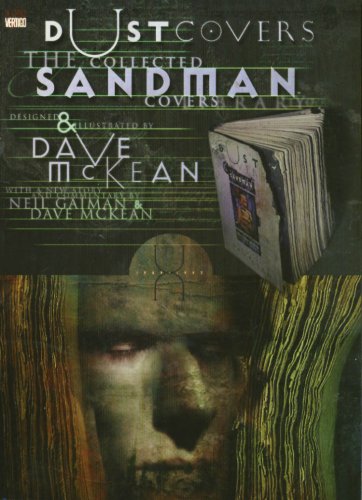
He and Gaiman did four children’s picture books, of which I’ve enjoyed just two but of course your opinions will be different — those two were The Wolves in the Walls and Mirrormask. Now the children’s novels Coraline and The Graveyard Book are wonderful indeed.
(Digression away from McKean for a moment. Gaiman narrates the telling of Coralline and need I say that it’s a magnificent reading indeed? The Graveyard Book is now a full cast production with him as the narrator. End of digression.)
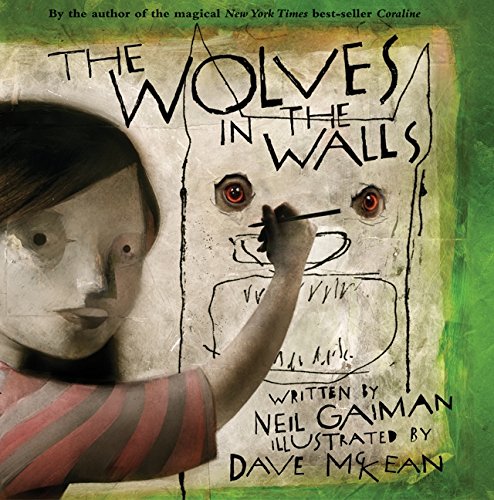


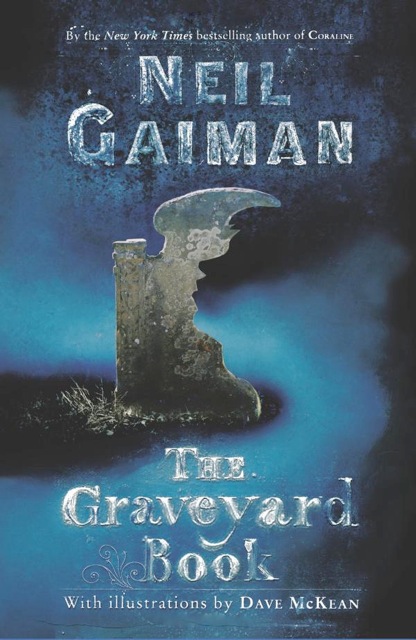
I did not know ‘til now that he was a concept artist on the Neverwhere series. Very interesting.
So he was the director of his Mirrormask film which Kurt Loder of MTV said of, “This one-of-a-kind fantasy film may be seen as a classic someday, possibly quite soon.” It garnered an eighty percent approval rating among audience members there. Nice.
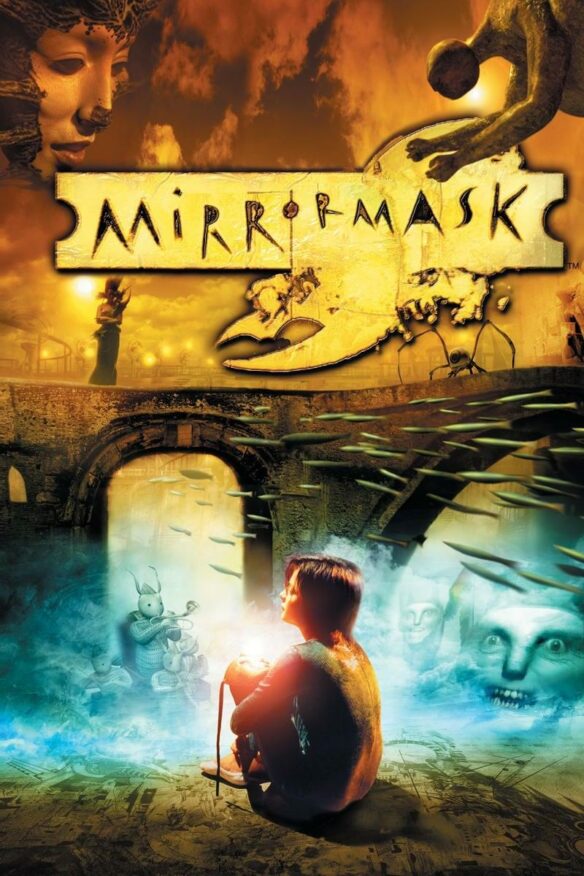
He’s been nominated and won far too many Awards to list them here so I’m singling out just these. He has been nominated five times for a World Fantasy Award and he won the award once. His graphic novel Cages won a Harvey Awards for best Graphic Novel.
(7) POWER IN SMALL PACKAGES. CBR.com thinks you will be more surprised than will probably be the case when they roll out their list of the “10 Best Movies You Didn’t Know Were Originally Short Stories”. At least half of them are sff or genre-adjacent.
When the credits roll, it’s not surprising to see that a film was based on a novel. Some authors, like Stephen King, are prolific in writing books that go on to be adapted for the big screen. Something less common, however, is seeing a film that has been adapted from a short story….
10. Arrival
Arrival (2016) was adapted from the novella Story of Your Life by Ted Chiang, which appears in his collection, Stories of Your Life and Others. As most adaptations do, the film takes some liberties, like adding action in the third act, but beyond that, much of the main plot stays the same.
Arrival is a remarkably easy-to-follow story considering that the content follows a linguist learning an entirely new language from aliens and a physicist discussing refraction and mathematical theories, all mixed with the idea of non-linear time. Both versions of the story are heartbreaking in their own way and deserve to be appreciated in their respective forms.
(8) REMEMBER SF PROMISING FOOD PILLS? [Item by Mike Kennedy.] Well, here they come. Except, in reverse. OK, so the whole thing is still an idea in development. But it’s pig approved. “This Vibrating “Pill” May Be the Next Best Thing For Weight Loss” reports Inverse.
Imagine a pill no bigger than a multivitamin vibrating in your stomach. If that’s got your mind in the gutter, better shift it to your gut: such tiny devices are very real and maybe the future of weight loss.
That’s according to research out of MIT, where engineers developed a battery-operated capsule-like device that’s supposed to make you feel full by stretching out your stomach using vibration. When the pill was given to pigs 20 minutes before a meal, the animals ate 40 percent less than they usually did, all the while their bodies released the usual prandial melange of hormones involved in insulin production and appetite suppression….
(9) FOR THE ANTIQUARIANS AMONG US. Mark Funke, Bookseller – mentioned here the other day in connection with the sale of the Dillon art for The Left Hand of Darkness – previously published a catalog – Science Fiction – to promote the sales of several dozen historic letters, documents and publications. The catalog is still online, though seems to have succeeded in its purpose of selling everything listed in it. Makes interesting reading.
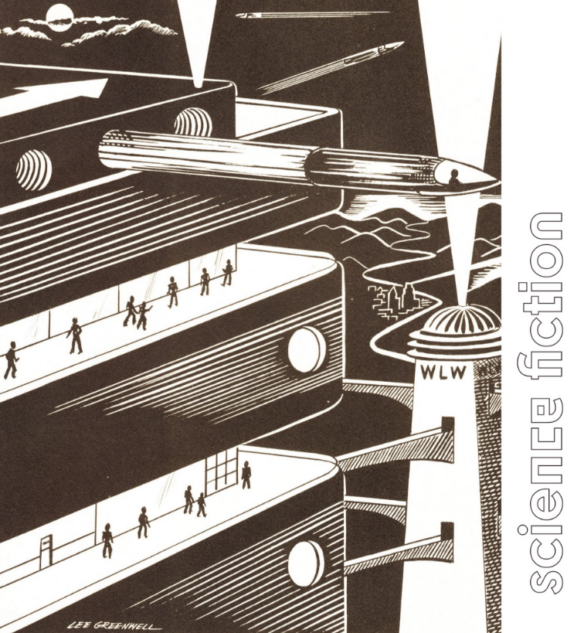
[Thanks to Chris Barkley, Cat Eldridge, SF Concatenation’s Jonathan Cowie, Steven French, Mike Kennedy, Andrew Porter, and John King Tarpinian, for some of these stories. Title credit belongs to File 770 contributing editor of the day Danny Sichel.]
Discover more from File 770
Subscribe to get the latest posts to your email.

(7) Given that a good novel generally has far too much material to put into a two hour movie, I’m surprised that the fraction of movies adapted from short stories isn’t bigger (judging, at least from the movies listed in the Best Adapted Screenplay Oscar award wikipedia page). And two of the linked article’s ten movies aren’t adapted from short stories, but from novellas.
(9) “For the Antiquarians Among Us” — I’m 61 now. Is that antiquarian?
I’m looking for a large rabbit. Has anyone seen him around here?
Oor Wombat reports the surgeon has told her they got ALL of Cancer-Bob!
bill: Agreed; shorter works fit a movie run length better than novels do. I think PK Dick alone has more than 10 movie adaptations of his shorter works.
Andrew (not Werdna) says Agreed; shorter works fit a movie run length better than novels do. I think PK Dick alone has more than 10 movie adaptations of his shorter works.
Counting foreign language adaptations, there’s been more than fifty so far of his shorter works, some showing up as one-offs on series like the Boris Korloff narrated Out of This World.
Pixel drop, pixel drop, pixel’s gonna drop on me.
(2) I’m not the only one who’s already proclaimed that chatbots are the current NFTs, collapse coming soon, when management discovers they fail as replacements for actual people.
@ P J Evans
Woohoo!
(2) AI can make art that feels human?! Really? 🙂
(8) A vibrating pill in my stomach? Uhm, nope nope nope…
I’m trying to think of the first time I came across something similar to futuristic food pills. It was probably the full meal condensed into a biscuit in one of “The Space Ship Under the Apple Tree” books.
Anne Marble says I’m trying to think of the first time I came across something similar to futuristic food pills. It was probably the full meal condensed into a biscuit in one of “The Space Ship Under the Apple Tree” books.
I’m reasonably sure that it wasn’t in text fiction that I first encountered them but some late Sixties animated children’s show that I first saw the whole meal in a pill idea. It even had the character describing the meal as having a full Thanksgiving dinner in it…
Let’s hear it for short stories adapted to film!
Novels, generally speaking, should be miniseries. I’ve been saying that for decades.
And wonderful news about Oor Wombat!
Food pills. Never wanted them, but my late wife said once in a while that she wouldn’t mind, if we didn’t have to think up dinner and make it that day.
Vibrating. And your stomach produces everything. Right, I can see that working really well… acid reflux, anyone? Ulcers?
2) AI rehashing old ideas? Sounds like the rehashed superhero overload of movies lately. I wonder if randomly generated material can best Disney.
8) A dinner pill? Willie Wonka and the Chocolate factory got it right, except the desert. Why is it always at the desert?
9) Regarding Antiquarians Among us, an antiquarian is someone interested in old books, not necessarily someone who is old, Bill.
Also, regarding old books, I ran across a heartbreaking story about a bookstore in France that was inundated by flood waters:
https://www.rfi.fr/en/france/20231224-europe-s-largest-bookshop-devastated-by-floods-in-southwest-france
Here’s video of the store, inundated:
https://www.tf1info.fr/societe/video-tf1-inondations-en-gironde-les-images-de-la-plus-grande-librairie-d-europe-village-du-livre-sablons-sous-les-eaux-2279479.html
(8) Here are a few links for your further prandial (dis)pleasure:
Trope Talk
1930 science-fiction musical movie; Just Imagine
If [UK] May 1960
Cover of Same
Manga
2008 Advert; Tums to the rescue when George Jetson gets food pill induced heartburn
A Modern Delusion
6) My understanding is that McKean did the animation for the Neverwhere opening credits. (Said McKean, as quoted by Gaiman: “I did it on me Macintosh!”)
And I was today years old when I learned that the original BBC broadcast had different music under the credits than what was on the bootleg VHS my friend bought at a con, or what’s now on my DVD or iTunes versions.
https://youtu.be/hhlnPREMOLQ?si=ieyPQQf37bCGPNyH
That ‘08 commercial with Rosie the Robot is interiesting as she was voiced by Jean Vander in the series but I swear she’s voiced by Arleen Sorkin saying her Mister J. from BTAS.
Just checked and yes , it was most likely is Sorkin as Vander died in 1999.
I’m sure the first place I saw a food pill was the 1960s Jetsons (which also had a medical sensor pill, which is now so real-life that it hardly seems noteworthy anymore).
(4) Clearly (sadly) Mamet is unaware (but I hope very few of Filers here) of “The Manhattan Phone Book (Abridged)”. It used to be available on John Varley’ s website, but apparently has gone the way of all site redesigns. (Still, just google Jerry L. Aab and Ralph Zzyzzmjac.)
In general I think that the fewer pixels, the less scrolling. Happy birthday and and a successful new year to everyone!
8) Sure, swallowing a joy buzzer sounds like something I’d want to do.
I have long (like, for 50 years) opined that novellas and novelettes are more appropriate for filmification than (most) novels. In the latter there is generally too much plot, and often too many characters. What and who has to go? Obviously such decisions can be and are made, but they generally compromise and often diminish the artistry and charm of the original works, to the chagrin of their pre-film readers.
Shorter works usually achieve their compactness by being sparser (and more efficient) than novels with descriptions of background, setting and scenery – these are (I think) precisely the areas where filmmakers can contribute visually what they are best at, adding to the core work rather than detracting (and hopefully not distracting) from it.
Short stories are usually going to need plot expansion cooked up to fulfil the needs of a full-length film – let’s hope the writers are up to the task and not so numerous as to spoil the entire broth.
It’s not, I think, a coincidence that more than a few successful films are based on novels written in the first place by film industry figures, such as Michael Crichton and Clive Barker. Doubtless their original prose was constructed with a mind to future adaptation, and in Crichton’s case I find this so obvious that his novels usually seem to me unsatisfactorily ‘thin’ in texture – he knows that he or another director will “colour in” the background, so he only writes a black-and white sketched one.
@Terry hunt — Michael Crichton, Clive Barker, and also Richard Matheson, for whom I think your point holds as well.
And yet, I think there are more truly great movies based on novels than there are on shorter works.
For example, look at the AFI top 100 list. Of the top ten, five are based on novels. The highest-ranked one based on a short story is “It’s a Wonderful Life” at #11. I don’t think this list is definitive, but I think the trends hold true in other major lists.
@bill–There are very few films, in total, adapted from short stories. I seriously doubt that it’s a large enough number to make anything like a useful comparison of relative success.
Interesting novels to potentially adapt are much easier to discover. Very few short stories get their own marketing campaigns.
Arthur C. Clarke’s very short story “The Sentinel” was expanded into a movie.
Tom Becker: And then he wrote the tie-in novel for the movie.
I could only spot three of the top ten that I know to be from novels – The Godfather, Gone With The Wind and The Wizard Of Oz. What were the other two?
@Tom Becker–
And that movie, as I recall, was a honking big success.
@Cliff
“I could only spot three of the top ten that I know to be from novels – The Godfather, Gone With The Wind and The Wizard Of Oz. What were the other two?”
The Graduate and Schindler’s List
@Lis Carey
“There are very few films, in total, adapted from short stories. ”
My point, exactly.
@Bill – interesting – thanks!
Guess I missed the edit window. I was halfway through writing about two significantly different types of successful movies based on novels. In the first category I’d put The Godfather and Tinker Tailor Soldier Spy. These are both heavy on cast and plot, and much was cut to make what turned out to be outstandingly well-crafted and self-contained movies. Lynch’s Dune not so much.
The second category seems to be based on shorter, more literary works. I’d suggest as examples To Kill A Mockingbird, The Rachael Papers, The Grapes Of Wrath, A Clockwork Orange. (I confess I’ve yet to steel myself to watch this last one, much to the amusement and mockery of an actor I met recently.)
2) AI does serve the useful purpose of creating disposable images. I am doing social media work for a couple of veterans organizations. We have been advised against just grabbing a random image from the internet due to copyright concerns.
So when I am getting ready to deploy a meeting reminder and need a graphic, AI can help provide a good base image.
I don’t see AI as replacing high-caliber art.
I do see it as an easy way to generate a low-value image for low-value applications.
Regards,
Dann
In the storm, the tree is glad of the root, Not of the branch. – Protesilaus – from Harrow the Ninth